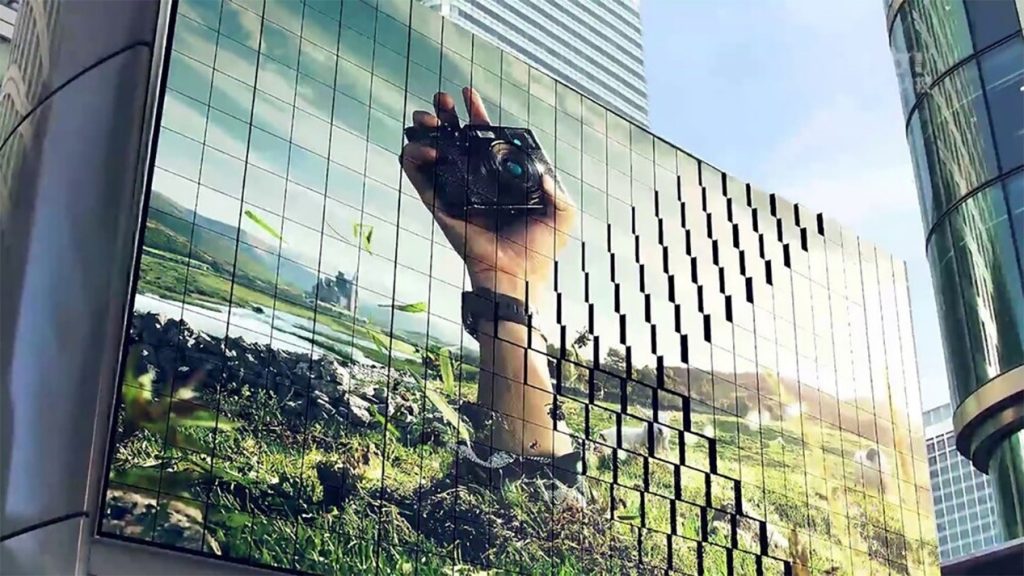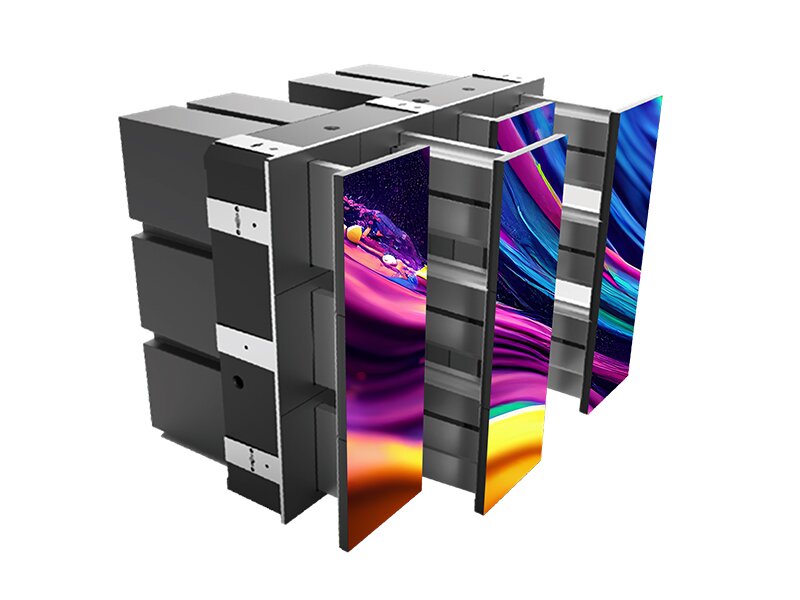A well-chosen kinetic LED display can significantly enhance the visitor experience and expand a brand’s impact. Conversely, an inappropriately sized screen can lead to installation difficulties, costly downtime, and poor audience engagement. I’ll explain how to select the right kinetic LED display for your venue by combining several key factors, including pixel pitch, viewing range, and brightness range, as well as content and creative recommendations, and operational considerations, allowing for an objective comparison of kinetic LED displays.
First, assess the installation site and audience needs for the kinetic LED display
The first step is to evaluate the target audience for your installation. Determine where the screen will be installed (indoor atrium, exterior wall, stage backdrop). Consider the audience distance and viewing angle. How long will the audience typically look at the screen? Are there any ambient light restrictions? These questions determine key parameters such as pixel pitch, brightness, size, and motion ratio.
Converting space requirements:
Viewing distance → pixel pitch. A useful rule of thumb is: minimum comfortable viewing distance = pixel pitch x 3 to 6. For example, a 2 mm pitch is comfortable to view at a distance of 6 to 12 meters. 6mm pitch is best viewed from 18 to 36 meters. Closer viewing distances require finer pixel pitches.
Ambient Light → Brightness. Indoor kinetic installations with controlled lighting typically require lighting levels of 800 to 2,000 nits. Hall displays in strong sunlight or outdoor settings require 4,000 to 7,000 nits or higher.
Audience Dwell Time → Motion Complexity. Shorter dwell times favor bold, high-contrast motion and crisp fonts. Longer dwell times favor narrative 3D experiences and rich visual depth.
At the same time, there are trade-offs with acoustics and sightline impacts. Kinetic devices introduce moving parts, and their motion should not interfere with critical sightlines required for safety or performance. Please document these limitations during the site survey and prioritize factors such as pixel density, cabinet weight, and range of motion, taking into account these limitations.

Define the visual and creative goals for your kinetic LED display
After determining the venue and audience, clarify the visual functionality you want your kinetic LED screen to achieve. This ranges from animated logos on moving poles to full volumetric 3D animations that can be rearranged to create realistic spatial depth. Identify your focus on brand exposure, experiential art, data visualization, advertising, or wayfinding; each use case requires a different technology choice.
Creative Considerations:
1. 2D Motion on Dynamic Structures: Pushing 2D video onto moving panels or strips can emphasize dynamic geometry. This approach requires a simpler content pipeline and lower pixel resolution for moving elements.
2. Volumetric 3D Content: If you plan to create true depth, your installation will require higher pixel density, precisely synchronized motion, and a dedicated 3D kinetic LED display for 3D mapping.
3. Interactivity: While touchless interactivity can increase engagement, it also introduces latency and complexity to the control system.
Finally, consider overall legibility. Some motion effects can increase cognitive load, so use strong contrast, legible fonts, and pauses in the motion to make the message easier to grasp.
Choosing Motion Mechanics and Structural Design
The kinetic components of a kinetic LED screen refer to the moving rods, blades, rotating panels, translating arrays, and articulated segments. Each type of motion presents unique mechanical, control, and safety considerations. Therefore, it’s essential to select a motion system that aligns with your creative objectives and operational requirements.
Common Motion Architectures:
1. Linear Actuator Arrays: Provide precise translation, helping to create vertical depth. Longer actuators can be heavy, requiring structural support and counterweights to prevent them from becoming unstable.
2. Rotating Blades or Cylinders: Create smooth, three-dimensional forms that are typically compact and rigid. Consider rotational inertia and safety barriers.
3. Articulated Arms or Robotic Modules: Offer maximum flexibility, but at a cost and maintenance cost. Suitable if you require unique motion choreography and frequent reconfiguration.
4. Modular Panels on Servers: Provide flexible, phased installation and easier replacement and expansion.

Technical Specifications (Pixel Pitch, Brightness, Refresh, Power, IP Rating)
Carefully specify the display electronics of your kinetic LED screen; these specifications determine image clarity, reliability, and suitability for filming or broadcasting.
Basic Specifications and Practical Ranges:
1. Pixel Pitch: Determined by viewing distance. For intimate galleries with viewing distances of 3-6 meters, a pitch of 1.2-2.5mm is recommended. Larger public spaces typically use a pixel pitch of 3-6mm or greater.
2. Brightness: Indoors with controlled lighting: 800–2,000 nits. Semi-outdoor or brightly lit halls: 2,000–4,000 nits. Outdoors in direct sunlight: 5,000–7,000 nits or higher. Ensure automatic dimming to protect the LEDs and optimize eye comfort.
3. Refresh Rate: For live-action compatibility and flicker-free capture, select an LED driver with a refresh rate >3,000 Hz; for broadcast-quality capture, many integrators require >6,000 Hz.
4. Color Gamut and Calibration: Wide color gamut (Rec. 709 or DCI-P3) and per-module calibration ensure color consistency between moving modules.
5. Power Consumption: Depending on brightness, average power consumption is expected to be 300–700 W/m². Please plan for power capacity and redundancy accordingly.
6. Weight: Cabinet weight varies; modular LED cabinets are expected to weigh 25–45 kg/m². Please refer to the LED display manufacturer’s data and structural calculations for specific details.
7. Protection Rating: Indoor kinetic LED displays typically require IP40; environmental sealing for mixed indoor/outdoor or exposed installations must meet IP65 or higher.
8. Serviceability: Select panels and modules with front and rear access. For kinetic displays, front accessibility is often necessary to ensure safe maintenance without disassembling the motion system.
Choosing the Right Kinetic LED Screen for You
Selecting the right kinetic LED screen requires assessing your audience and space, clarifying your visual objectives, determining the motion and electronic platforms that support your content, and carefully planning the integration options. This is crucial whether you’re opting for a 3D kinetic LED screen or a kinetic ribbon display to enhance your retail storefront’s visual appeal. If you’re unsure about the right choice, we can help translate your venue’s specific constraints into custom specifications.

